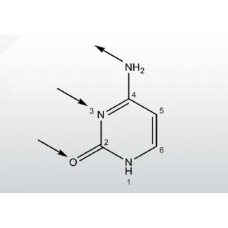Guanine with the formula C5H5N5O is a purine derivative consisting of a fused pyrimidine-imidazole ring system with conjugated double bonds. This unsaturated arrangement means that the bicyclic molecule is planar.
Guanine is a purine base that is part of the nucleotides that make up DNA and RNA. It is found in the scales and skin of fish. It determines the silvery coloration of fish, is found in special cells - iridocytes (leucophores), insoluble in water, in alcohol, ether and acetic acid. It is a part of guanosine phosphoric acids.
Guanine is one of the purines that accumulates in large quantities in certain tissues, such as scales, in microcrystalline or granular form. Its crystals or particles oriented in tissues reflect incident light and thus give fish scales a white or silver coloration. In the skin and scales of fish guanine is in special cells known as granophores or iridophores, and the reflective properties of guanine crystals change depending on variations in the level of background light. The diversity of coloration of fish is mainly the result of light absorption of certain wavelengths of chemical substances contained in the tissue - natural pigments (biochromes). Carotenoids fully or partially determine the coloration of fish.
Guanine scales of some fish (bleak) are used for technical purposes (e.g. for making artificial pearls).
Guanine
Tags: guanine

